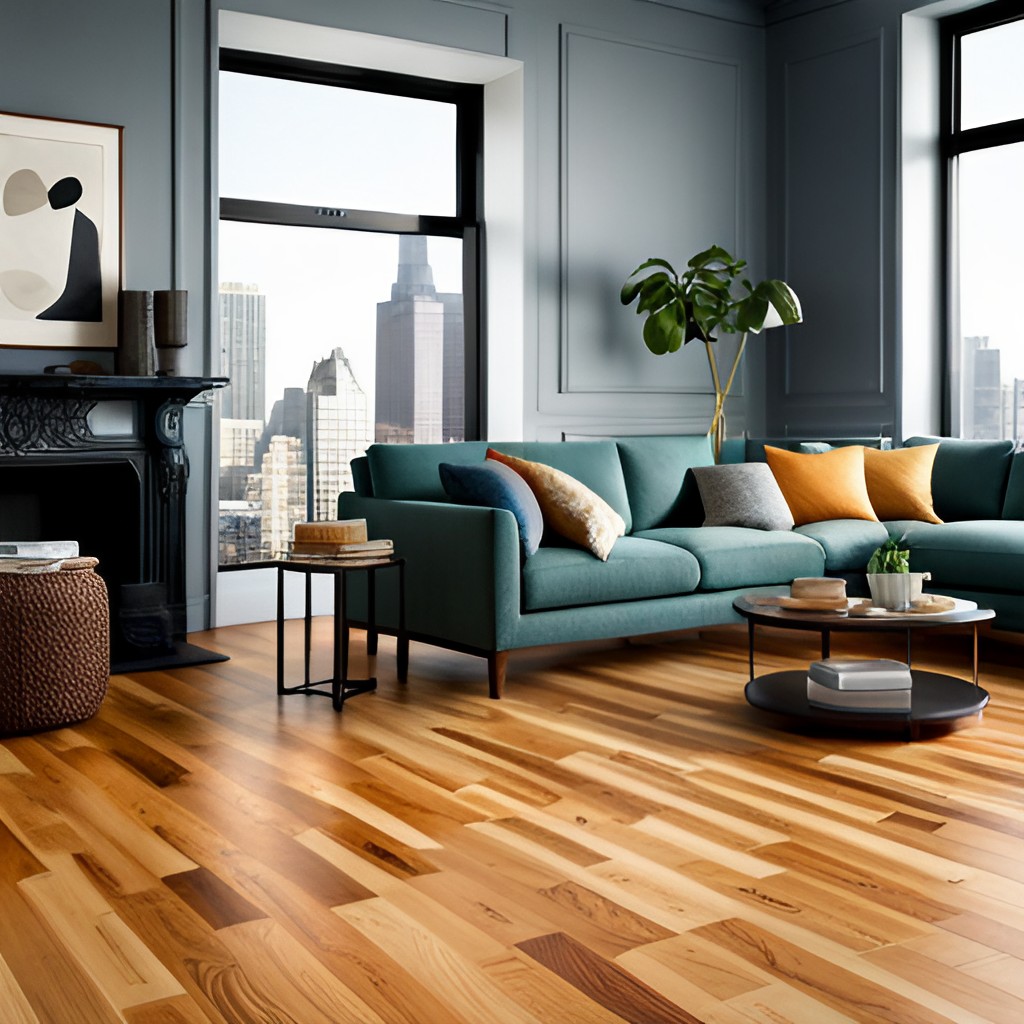Hickory flooring is renowned for its durability, distinct grain patterns, and rich color variations, making it a popular choice among homeowners and interior designers. Derived from the dense wood of the hickory tree, this type of flooring is not only visually appealing but also highly resilient, capable of withstanding heavy foot traffic and the wear and tear of daily life.
Hickory flooring stands out due to its exceptional hardness, which ranks higher than many other hardwood options, including oak and maple.
This inherent strength makes it an ideal choice for high-traffic areas like hallways, kitchens, and living rooms.
Its striking aesthetics, featuring a mix of lighter and darker shades, enable hickory to complement a variety of interior styles, from traditional to rustic to modern. Additionally, hickory flooring comes in a variety of finishes and plank widths, providing further customization to suit individual preferences and design needs.
Understanding the costs associated with hickory flooring is crucial for making an informed investment. The upfront expenses, which include the cost of materials, installation, and any additional treatments or finishes, can vary significantly.
Factors such as the quality of the wood, the complexity of the installation, and regional price differences all play a role in determining the total cost.
Moreover, considering the long-term value, including maintenance and potential increases in property value, is essential. A comprehensive understanding of these costs ensures that homeowners can budget effectively and make decisions that align with their financial and aesthetic goals.
Types of Hickory Flooring
Solid Hickory Flooring
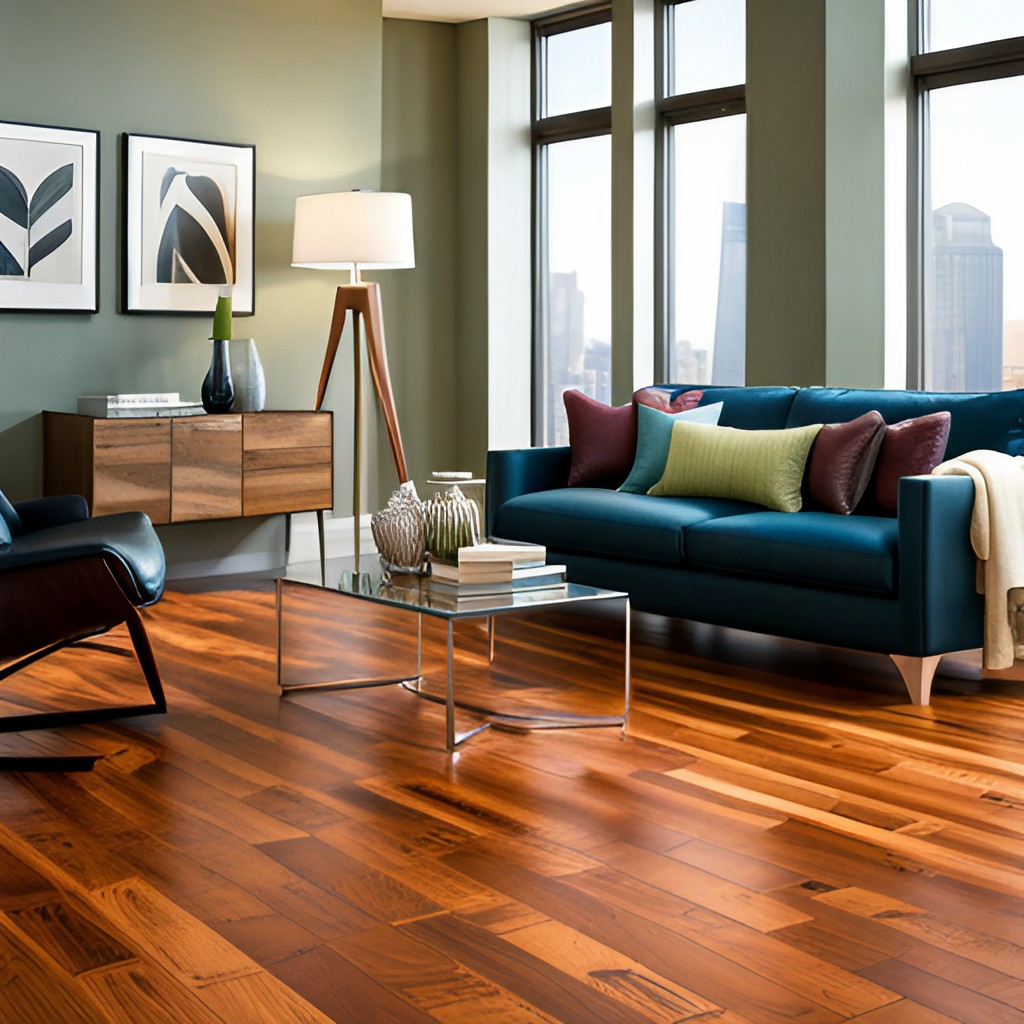
Solid hickory flooring is crafted from single pieces of hickory wood, making it a traditional and highly durable option. This type of flooring is prized for its natural beauty and longevity; with proper care, it can last for several decades.
Solid hickory flooring can be sanded and refinished multiple times, allowing homeowners to rejuvenate the surface and maintain its fresh appearance over the years.
Its robust structure makes it highly resistant to dents and scratches, which is particularly beneficial in households with pets or young children. Installation of solid hickory flooring typically requires nailing or stapling to a subfloor, making it a slightly more labor-intensive process.
However, the timeless appeal and enduring quality of solid hickory make it a worthwhile investment for those looking to add a touch of elegance and durability to their home.
Engineered Hickory Flooring
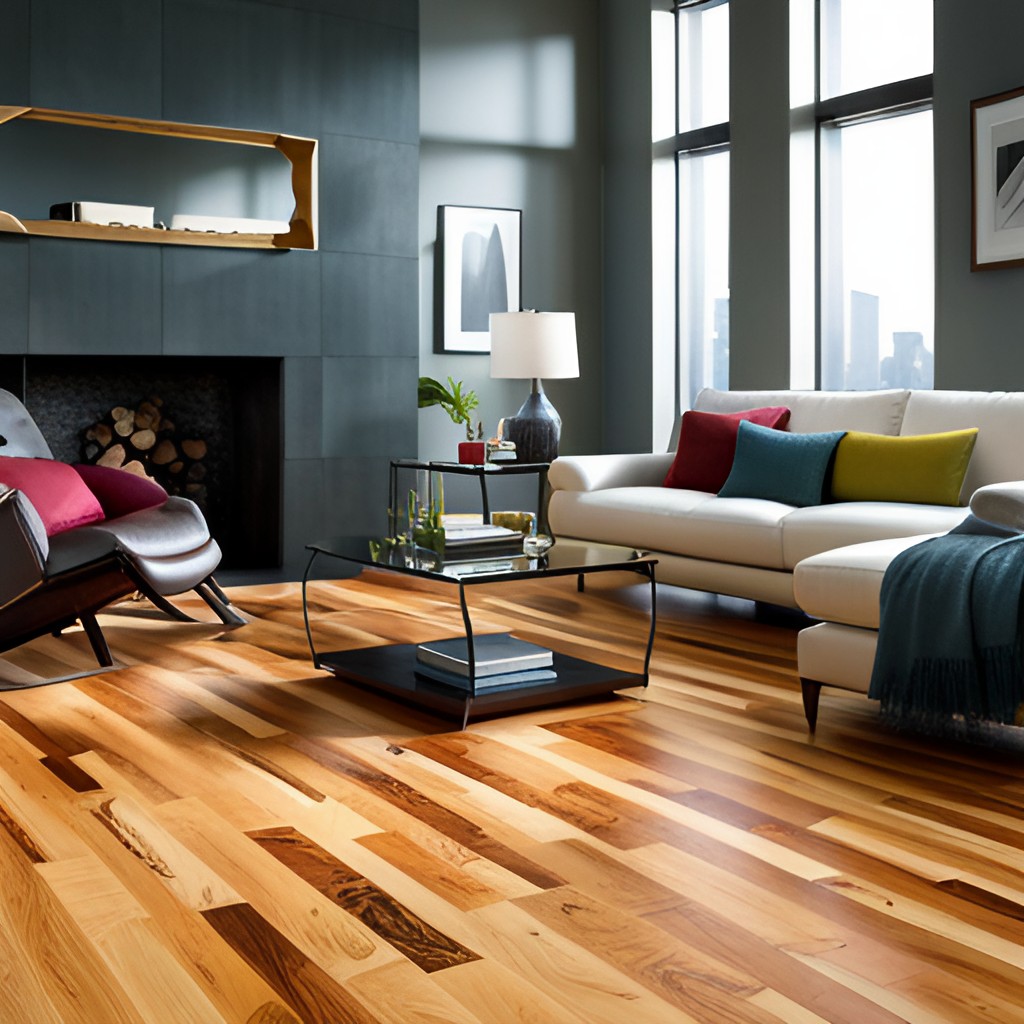
Engineered hickory flooring combines the beauty of natural hickory wood with enhanced stability and versatility. Unlike solid flooring, engineered hickory is constructed with a top layer of hickory veneer adhered to multiple layers of plywood or high-density fiberboard (HDF).
This composition allows engineered hickory to withstand fluctuations in humidity and temperature, making it an excellent choice for areas prone to these changes, such as basements or bathrooms.
Engineered hickory flooring can be installed using a variety of methods, including floating, gluing, or stapling, offering flexibility for different subfloor types.
Although it can’t be sanded and refinished as many times as solid hickory, engineered hickory still offers considerable durability and aesthetic appeal.
Its ease of installation and adaptability to various environments make it an attractive option for those seeking both beauty and practicality in their flooring choice.
Factors Affecting Cost
1. Quality and Grade of Wood

The quality and grade of wood play a crucial role in the overall appearance, performance, and value of hickory flooring. Wood grading is a standardized process that categorizes wood based on several factors, including the presence of knots, color variation, grain patterns, and defects.
Prime or Select Grade:
This grade denotes the highest quality wood with minimal imperfections. Prime hickory flooring showcases uniform color and grain patterns, offering a sleek and polished look that is ideal for formal settings or contemporary interiors.
No. 1 Common Grade:
A step down from select grade, No. 1 Common includes more natural variations, such as small knots and color differences. This grade is perfect for those who appreciate a bit of character and rustic charm in their flooring.
No. 2 Common Grade:
Also known as Rustic Grade, this level features prominent knots, streaks, and color variations, providing a markedly natural and textured appeal. No. 2 Common Grade is often chosen for more casual or country-style décors, where the emphasis is on warmth and authenticity.
Cabin or Utility Grade:
The most affordable option, cabin or utility grade wood exhibits the most character with significant imperfections and variations. While it may lack the refined look of higher grades, this grade can be a cost-effective solution for utility areas or projects where aesthetics are a lesser concern.
2. Finish and Treatments
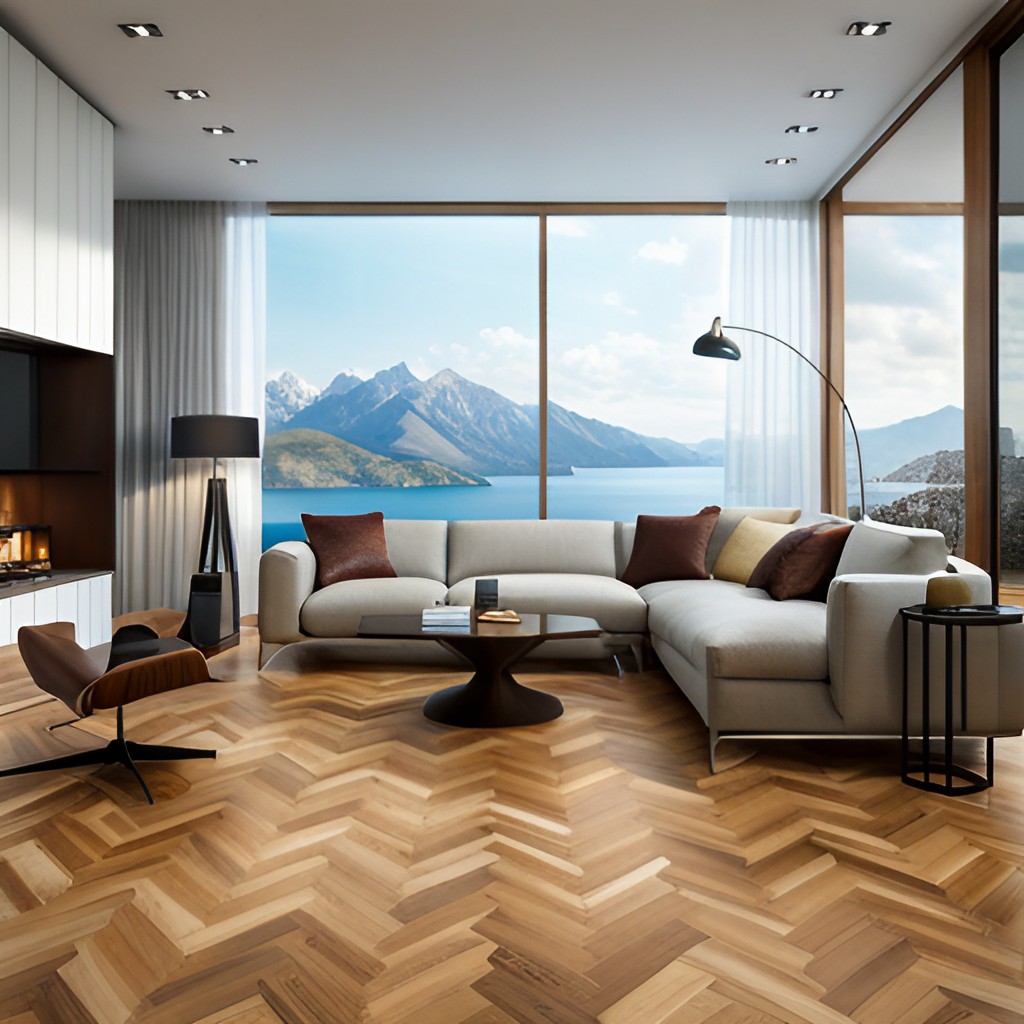
The finish and treatments applied to hickory flooring can significantly impact both its appearance and longevity. When selecting a finish, homeowners can choose between several options, each providing different levels of sheen, durability, and maintenance requirements.
Oil-Based Finish:
Typically, oil-based finishes penetrate deep into the wood, enhancing its natural grain and color while providing a warm, rich glow.
This type of finish is durable and resistant to wear, making it suitable for high-traffic areas. However, it may require more frequent maintenance to maintain its appearance compared to other finishes.
Water-Based Finish:
Offering a more eco-friendly option, water-based finishes have lower volatile organic compound (VOC) emissions and dry more quickly than oil-based finishes. They provide a clear, protective layer that preserves the floor’s natural color, making it a popular choice for those who prefer a more contemporary look.
Polyurethane Finish:
Available in both oil-based and water-based forms, polyurethane finishes create a strong, protective barrier against scratches, scuffs, and spills. This finish can come in various sheens, from matte to high gloss, allowing homeowners to customize the look of their flooring.
Wax Finish:
Applying a wax finish results in a low-sheen, soft luster that enhances the wood’s natural beauty. While wax finishes offer moderate protection and are relatively easy to apply and repair, they can be less durable than polyurethane finishes and may require more frequent reapplication.
Aluminum Oxide Finish:
Known for its exceptional durability, aluminum oxide finish is often used in pre-finished hardwood flooring. This finish is highly resistant to scratches and abrasions, making it ideal for busy households and commercial spaces. The downside is that once applied, it can be challenging to refinish or repair.
In addition to finishes, various treatments can be applied to enhance the wood’s properties and aesthetics. These treatments include staining, which alters the wood’s color, and distressing, which adds texture and an aged appearance to the flooring.
3. Plank Size and Thickness
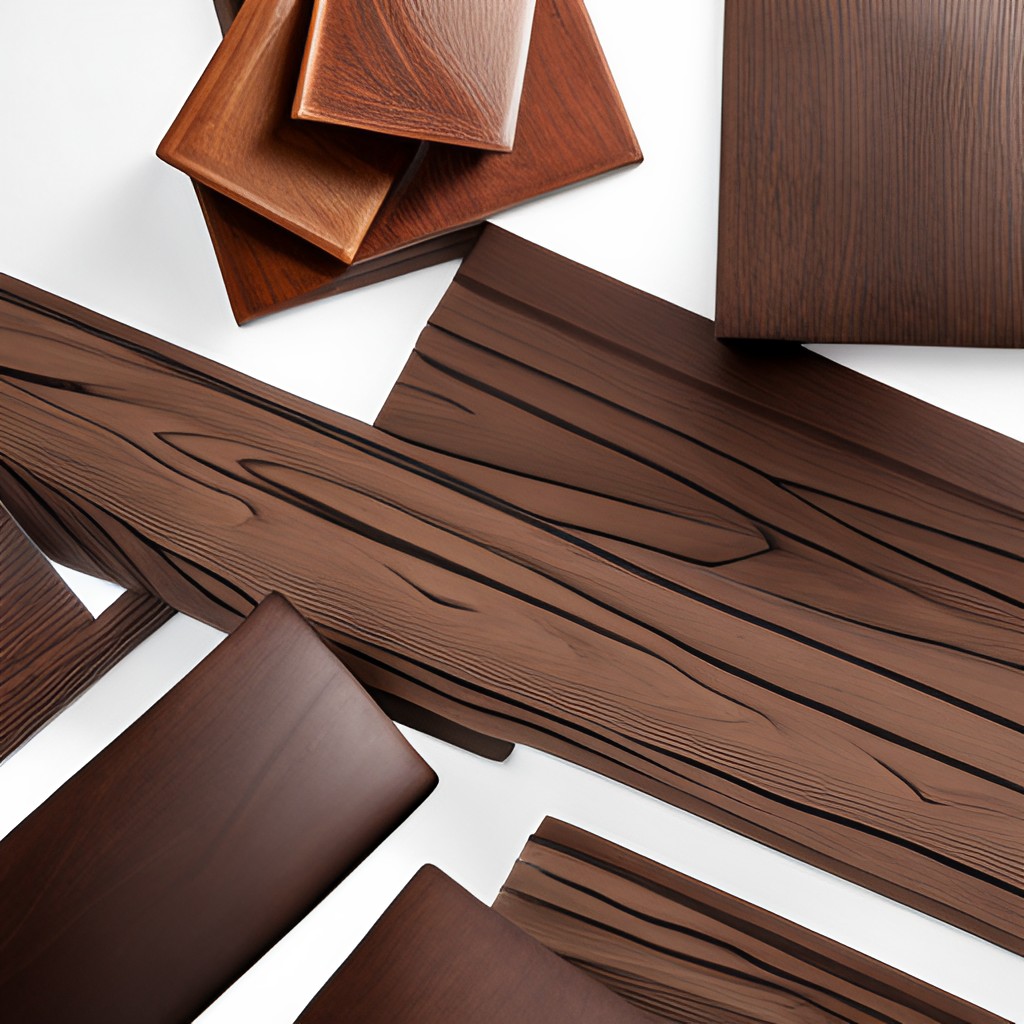
Choosing the right plank size and thickness is crucial in achieving the desired aesthetic and functional outcomes for your hardwood flooring.
Plank size typically refers to the width and length of the wood boards, while thickness impacts both the durability and overall feel of the floor. Wider planks, often ranging from 5 to 12 inches, can create a more spacious and upscale appearance, accentuating the natural grain patterns of the wood.
Conversely, narrower planks, typically between 2 to 4 inches, offer a more traditional look and can be more forgiving in environments where the wood may expand and contract due to changes in humidity.
When it comes to thickness, hardwood flooring generally comes in two options: solid and engineered. Solid hardwood planks are usually 3/4 inch thick, providing the benefits of longevity and the ability to be sanded and refinished multiple times.
Engineered wood, on the other hand, often ranges from 3/8 to 1/2 inch in thickness and consists of a top layer of hardwood adhered to several layers of plywood or high-density fiberboard.
Engineered planks offer greater stability in areas prone to moisture, such as basements and kitchens. Selecting the appropriate plank size and thickness will ensure that your flooring not only looks impeccable but also performs well over time.
4. Installation Costs
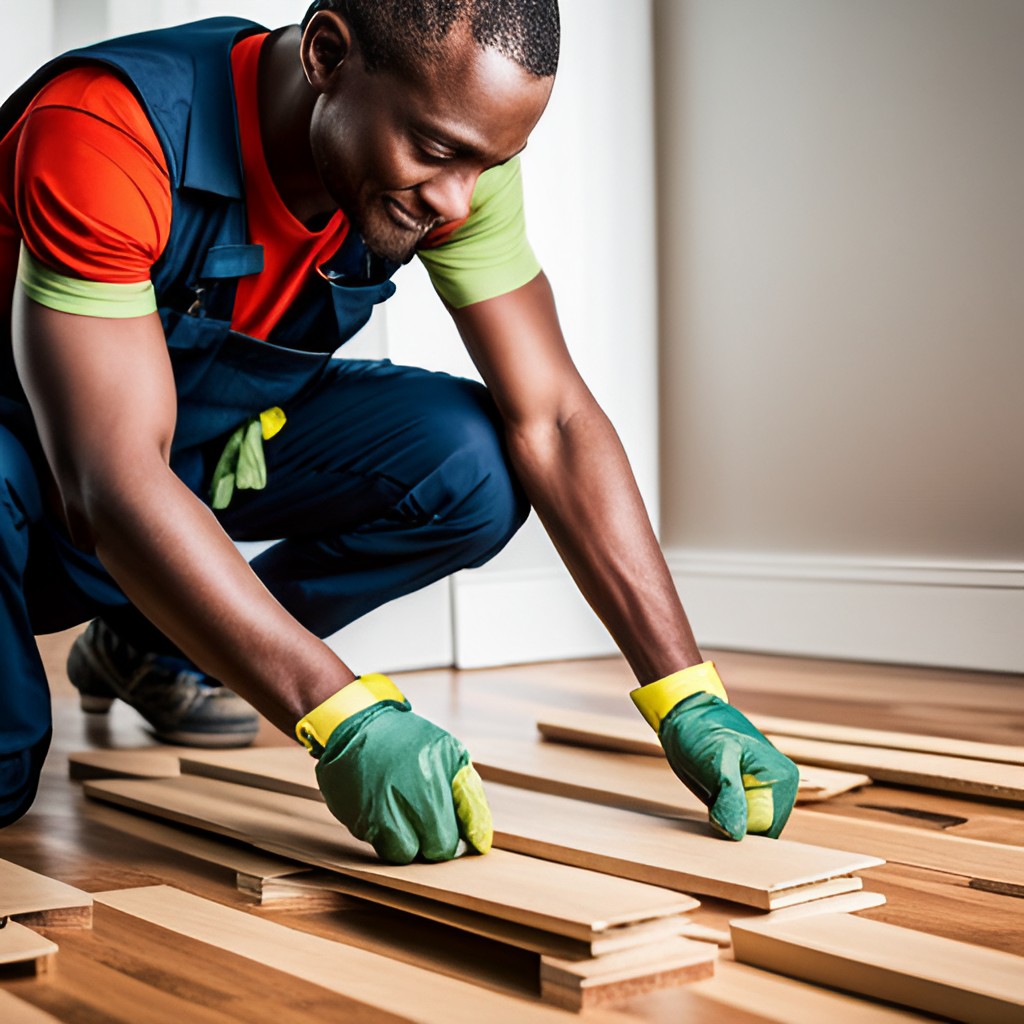
The cost of installing hardwood flooring can vary significantly based on several factors, including the type of wood, the size and complexity of the area to be floored, and any additional preparations or customizations required.
On average, homeowners can expect to spend between $6 to $12 per square foot for materials and installation. However, premium woods like Brazilian walnut or teak can push the material cost higher, sometimes reaching $20 per square foot or more.
Labor costs are another substantial component of installation expenses. Professional installation typically runs between $3 to $8 per square foot, depending on the region, the contractor’s experience, and the complexity of the installation.
For instance, installations involving intricate patterns or layouts, such as herringbone or parquet, can increase labor costs due to the additional time and skill required.
Preparation of the subfloor is also crucial and can add to the overall cost. This might include leveling the floor, removing existing flooring, and addressing any underlying issues like moisture or structural weaknesses. These prep tasks can cost an additional $1 to $3 per square foot.
Additionally, other factors that might influence installation costs include the condition and accessibility of the site. Homes with tight staircases, small doorways, or other architectural challenges may incur higher labor costs.
Extra services like removing old flooring, furniture moving, and post-installation cleanup can also add to the overall expense.
Overall, understanding these varied cost components will help homeowners budget more effectively and ensure a smooth installation process with no unexpected financial surprises.
5. Geographic Location
Geographic location plays a significant role in determining the overall cost of hardwood flooring installation. In urban areas, where the cost of living is higher, homeowners might find labor and material prices to be on the steeper side.
Conversely, rural and less densely populated areas tend to have lower costs due to reduced overhead and operational expenses for contractors.
The availability of specific wood types can also vary by region, influencing the material cost based on local supply and demand dynamics. Moreover, the climate of a location can affect the choice of wood and the installation process.
For example, areas with high humidity levels might require specific wood types and additional moisture barriers to ensure longevity and durability. Therefore, taking geographic factors into account is crucial when estimating the total cost of hardwood flooring installation.
Price Range
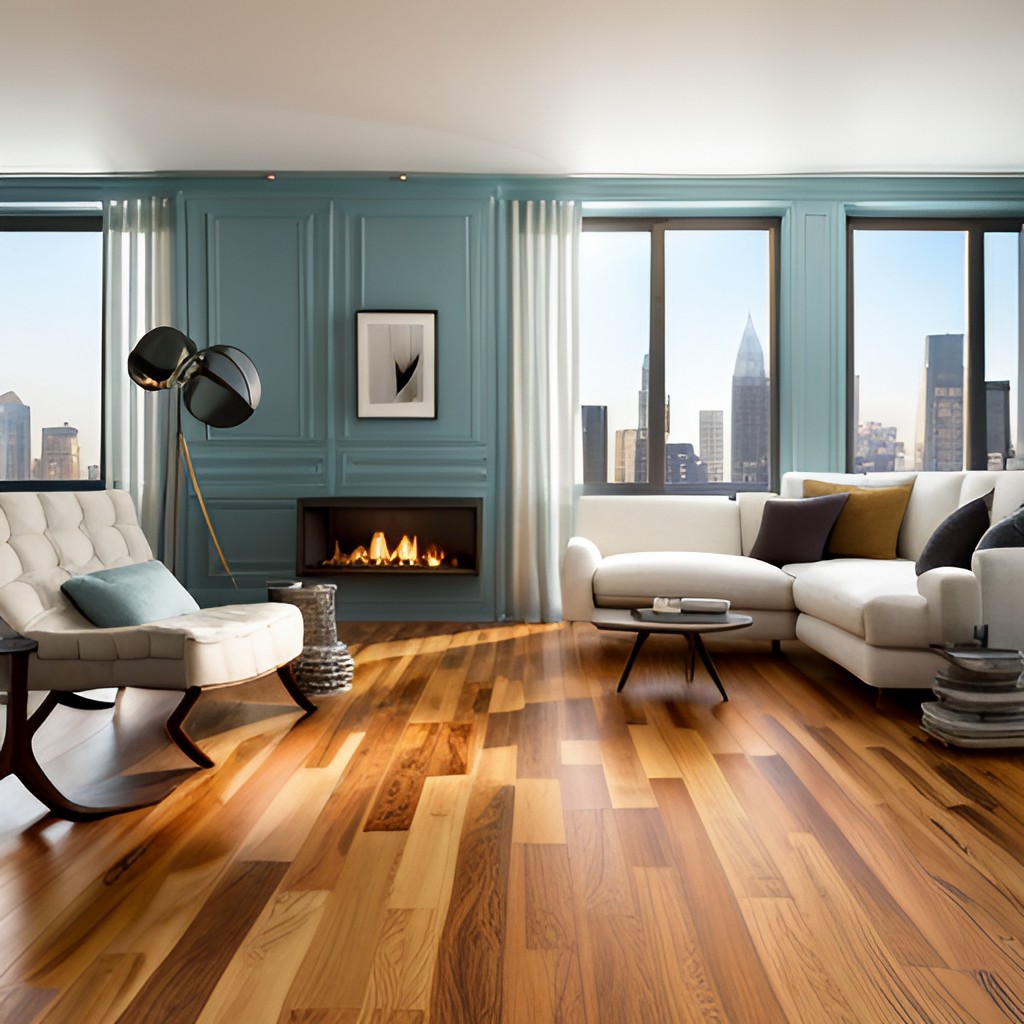
Average Cost per Square Foot
The average cost per square foot for hardwood flooring installation can vary widely based on several factors, including the type of wood chosen, the quality of materials, and the complexity of the installation.
On average, homeowners can expect to pay between $6 to $12 per square foot for standard hardwood flooring. This range typically includes both the cost of the materials and basic installation services.
However, premium wood species, such as cherry, mahogany, or high-grade oak, can drive the price up to $20 per square foot or more.
Engineered hardwood, which consists of multiple layers of wood veneer, generally falls on the lower end of the price spectrum, offering a cost-effective alternative while still providing the aesthetic appeal of traditional hardwood floors.
Additional considerations, such as custom staining, intricate patterns, or specialized finishes, can further affect the overall cost per square foot. For instance, custom stains and finishes might add an extra $2 to $5 per square foot.
Furthermore, the condition of the subfloor and the need for any preparatory work, such as leveling or moisture barrier installation, can add to the expense. Labor costs also play a significant role, with more experienced installers generally commanding higher fees.
Therefore, while the average cost provides a useful benchmark, actual expenses can vary considerably based on individual project requirements and preferences.
Comparison
When choosing hardwood flooring, it’s essential to consider your budget to determine the type of wood and installation services you can afford.
Budget Options
Budget hardwood flooring options typically include engineered wood and lower-grade solid hardwood. Engineered wood, which ranges from $3 to $8 per square foot, offers a cost-effective solution with a layered construction that provides stability.
Lower-grade solid hardwoods, such as utility oak or rustic hickory, may exhibit more natural imperfections but still offer the warmth and timeless appeal of traditional hardwood.
These options generally include basic installation services but may not encompass additional enhancements like custom stains or intricate patterns.
Mid-range Options
Mid-range hardwood flooring choices expand your selections to higher-quality engineered wood and popular solid hardwoods like maple or red oak. These options typically cost between $8 to $15 per square foot.
At this level, you can expect better material quality, a more extensive range of finishes, and more intricate installation patterns such as herringbone or chevron. Mid-range options often provide a balanced blend of durability and aesthetic appeal, making them a popular choice for many homeowners.
High-end Options
High-end hardwood flooring options can range from $15 to $30 per square foot or more. Premium woods such as walnut, mahogany, and exotic species like Brazilian cherry fall into this category.
These options not only offer unparalleled beauty and uniqueness but are also more durable and long-lasting. In addition to the premium materials, high-end installations may include custom staining, unique patterns, and specialized finishes that require skilled craftsmanship.
These projects often demand higher labor costs due to the expertise needed to achieve the desired aesthetic and high-quality result.
Related Topics:
Additional Costs
Underlayment and Subfloor Preparation
Proper underlayment and subfloor preparation are crucial factors that can significantly affect the cost of installing hickory wood flooring.
The underlayment acts as a moisture barrier, sound insulator, and cushioning layer between the subfloor and the hardwood flooring. High-quality underlayment materials cost more but offer better protection and performance over time.
The condition of the existing subfloor also plays a pivotal role. A level and smooth subfloor ensures a durable and even installation, reducing the likelihood of future issues.
If significant preparation or repairs are necessary, such as leveling the subfloor, installing a new subfloor, or addressing moisture issues, these tasks can add to the overall project cost.
Labor charges for these preparatory steps should be factored into your budget, as they are essential for maintaining the integrity and longevity of the hickory wood flooring.
Accessories (Mouldings and Trims)
Accessories such as moldings and trims are essential finishing touches that enhance the overall appearance and functionality of hickory wood flooring installations. Moldings include baseboards, quarter rounds, and shoe molds, which cover the expansion gaps between the floor and the wall.
Trims, such as T-mouldings, reducer strips, and threshold strips, help to transition between different flooring types or accommodate varying floor heights. These accessories come in various styles and finishes to match or complement the hickory flooring, ensuring a seamless and polished look.
The cost of these accessories varies based on the materials and complexity of the installation, but they are indispensable for achieving a professional and cohesive finish.
Maintenance and Upkeep
Maintaining hickory wood flooring involves regular cleaning and occasional refinishing to preserve its beauty and durability. Routine sweeping or vacuuming helps to remove dirt and debris that can cause scratches.
Using a damp mop with a wood-specific cleaner is recommended for deeper cleaning. It’s essential to avoid excessive moisture and harsh chemicals that can damage the wood.
Periodically, the floor may require refinishing to restore its original luster and address any surface wear. Additionally, using felt pads on furniture legs and area rugs in high-traffic areas can protect the flooring from scratches and dents.
Cost-Saving Tips
Purchasing in Bulk
Purchasing hickory wood flooring in bulk can significantly reduce costs, especially for large flooring projects. Retailers often provide discounts for buying large quantities, allowing you to save on the price per square foot.
When purchasing in bulk, it is essential to plan your flooring needs accurately, including accounting for waste and potential future repairs.
Buying a little extra can ensure you have matching materials in case any planks need replacement later. Additionally, coordinating with neighbors or friends for joint bulk purchases can further maximize savings.
Seasonal Sales and Discounts
Taking advantage of seasonal sales and discounts can also help reduce the overall cost of hickory wood flooring. Many retailers offer substantial discounts during holiday sales events such as Black Friday, Cyber Monday, or end-of-year clearance sales.
Signing up for newsletters from flooring retailers can keep you informed about upcoming promotions and special offers. It is worth considering purchasing during these periods, even if you are not ready to install the flooring immediately, as it allows you to benefit from lower prices.
DIY vs Professional Installation
Deciding between DIY installation and hiring professional installers can impact the total cost of your hickory wood flooring project.
DIY installation can save you a considerable amount of money, but it requires a certain level of skill and the right tools. If you have experience with floor installations, taking the DIY route might be a cost-effective choice. However, mistakes during installation can lead to additional expenses.
On the other hand, professional installation guarantees a high-quality finish and often includes warranties for their work. While it may be more expensive upfront, professional installation can save time and potential headaches, ensuring a durable and beautiful floor.
Conclusion
In conclusion, understanding the cost of hickory wood flooring involves considering multiple factors, including the type of wood, grade, finish, and installation method. Hickory flooring, known for its durability and striking aesthetics, can range from budget-friendly engineered options to premium solid wood variants.
While DIY installation offers potential savings, professional installers provide expertise and warranties, ensuring a quality finish.
By taking advantage of bulk purchases, seasonal sales, and mindful budgeting, homeowners can enjoy the timeless beauty and resilience of hickory wood flooring while maximizing value and minimizing expenses.
FAQs
Is hickory wood flooring suitable for high-traffic areas?
Yes, hickory wood flooring is highly durable and can withstand heavy foot traffic, making it an excellent choice for high-traffic areas such as hallways and living rooms.
How do I maintain and clean hickory wood flooring?
Regular sweeping or vacuuming to remove dust and debris is essential. For deeper cleaning, use a damp mop with a wood floor cleaner. Avoid excessive water and harsh chemicals to prevent damage to the finish.
Can I install hickory wood flooring over existing flooring?
It depends on the type of existing flooring. Hickory wood flooring can be installed over some existing floors like hardwood or vinyl, provided the surface is clean and even. It’s best to consult with a professional to determine the suitability.
